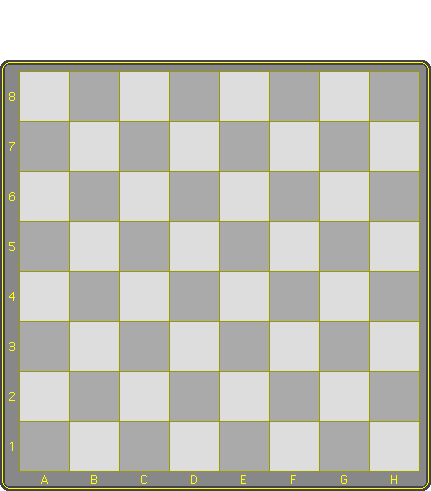Play Bashni interactively
Bashni and Shashki use almost the same material and an identical initial position. In Bashni however, a 'king' is a single man that must be identifiable on top of a column, and since it may become enclosed in one, also from the side.
 | Here are some of the ways a white piece may look in Bashni. By the nature of the capturing mechanism, prisoners will always be under a cap of the opponent's men (or kings), never in between them. In the above example, the four pieces on the left move and capture as a man, because there's a man on top. The three pieces on the right have a king on top and thus may move and capture as kings. Left to right we see a single man, a single man with three prisoners, three men with one prisoner, two men and a king with four prisoners, a king, a king with two prisoners and a king with five prisoners, one of them a king. |
Rules
The only difference between Shashki and Bashni is that in Bashni a jumped man or king, either as a single piece or as the topman or -king of a column, is not removed from play, but taken along as a prisoner under the capturing piece.
The above diagram shows the board and the pieces in initial position. There are two players, black and white. White begins. Players move, and must move, in turn.
The rules mention men and kings. A king is a promoted man. Columns with a man on top will also be called 'a man' and columns with a king on top will also be called 'a king'.
Moving
- Capture precedes over a non-capturing move. If the player to move has no capture available, he has two options:
- Moving a man
- Moving a king
- A man or a column with a man on top moves diagonally forwards to an adjacent vacant square. If it thus reaches the back rank the top-man is crowned to king and this marks the end of the move.
- A king or a column with a king on top moves diagonally forwards or backwards along any number of vacant square.
All pieces thus remain on the dark colored squares. From here on 'forwards' or 'backwards' will be understood as 'diagonally'.
Capture
Capture precedes over a non-capturing move. If the player to move can make a capture, he must do so.
- A man captures an opponent's piece, man or king, by jumping over it, forwards or backwards, to the square immediately beyond, which must be vacant for the capture to take place.
If from this square it can proceed in a similar manner, a jump in the same- or a perpendicular direction, it must do so, and proceed thus till the capture has been fully completed. If the column it controls thus lands on the back rank, it is immediately crowned to king and must proceed as such, if that is possible, in the same turn. This behaviour has led to the name "flying king". - A king captures an opponent's piece it can 'see' at any distance, by jumping over it and landing on any square beyond that it can reach unobstructed.
If from any such squares it can proceed in a similar manner it must choose one of these squares, and proceed thus till the capture has been fully completed. - In the course of a capture, a piece may visit a square more than once, as well as jump a piece more than once.
- A player may choose freely between different captures that may be available, regardless of the number or value of the piece(s) taken.
The expression "... and landing on any square beyond that it can reach unobstructed", does not necessarily imply choice. In fact, during the capture the king may have no choice because it is subject to completing the capture. After jumping the last piece it may choose to land on any of the subsequent vacant squares.
Object
If a player cannot legally move he loses the game. This may come about by losing all pieces or by having all pieces blocked. Draws may occur by 3-fold or mutual agreement. There are some special tournament rules to cover draws.
Example game
This is a game between two Bashni masters, Porvatov and Ivanov, over the board in Petersburg.
| External links | |||||||






